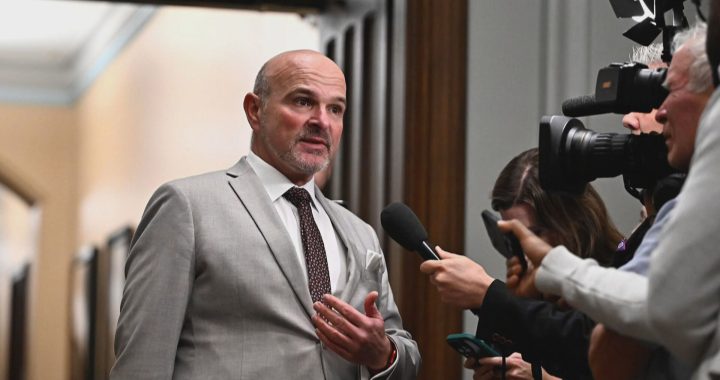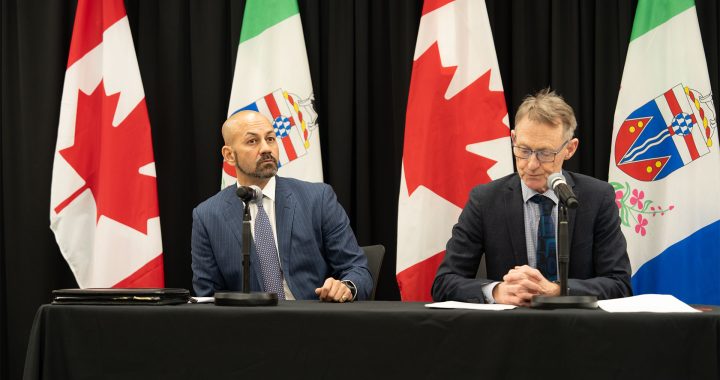Nunavut Premier Joe Savikataaq announced Wednesday that there are still zero cases of the COVID-19 virus in the territory.
There have been 166 tests given, 50 of which have come back negative leaving 116 people in self-isolation awaiting results.
Nunavut’s Health Minister George Hickes is still very cautious.
“I still believe we’re not safe, even with the measures we’ve taken. We need to make sure when it does appear in Nunavut, that we can control and isolate it,” said Hickes.
Like other territories and provinces, only people who exhibit symptoms of COVID-19 will be tested.
If a community receives a positive result, then they widen the net.
“If we find a positive case, we will be interviewing that individual about all of their contacts, and testing many if not all of their contacts and working out from there,” said Dr. Michael Patterson, chief of public health for Nunavut.
“The goal is… to track them, test them, isolate them and prevent the spread of the disease,”
When that testing ramps up, Nunavut’s home care nurses, who specialize in delivering healthcare to the doorstep of Nuanvummiut who need it, will be doing much of the testing.
Patterson said they will be protected.
“Any nurse visiting a Nunavummiut with symptoms of viral or respiratory tract infection, we’re mandating them to use personal protective equipment, especially if they’re going in to collect swabs for it,” he said.
On Monday, Nunavut announced some of the strictest travel restrictions in the country. Only Nunavut residents, and critical workers, will be allowed to travel to the territory.
If you want to return to Nunavut, you have to spend 14 days in quarantine at a hotel in one of four Nunavut entry points: Yellowknife, Winnipeg, Edmonton or Ottawa.
After 14 days under government supervision, you can return to the territory.
Those restrictions kicked in Wednesday.
“The idea here is to bring people home, but in a fashion that allows them to do it without introducing COVID-19 to their community and their loved ones,” said Patterson.
People trying to gain access to the quarantine hotels and secure admittance to Nunavut, are supposed to write an email to CPHOTravelRequests.nu.ca.
Students studying in the south are told to write FANS.nu.ca.
Critical workers, police and medical staff among others, need a note from the chief public health officer to enter the territory.
So far, 71 people have requested critical worker status as of this posting.
Officials urged returning residents to use those email addresses to register.
“What we can’t have happen is a large number of people showing up at the hotels unannounced, or unknown. We will not be able to ensure that Nunavummiut can return safely and efficiently if that happens,” warned Patterson.
Those quarantine hotels aren’t open yet.
Patterson told reporters that they hope to start giving responses to travelers in the next 24 hours.
“I can’t guarantee that we’re going to meet that goal,” explained Patterson. “We do have six people working on those emails as we speak.”
Savikataaq said he has been receiving questions from smaller communities about whether they need to practice social distancing.
The premier was emphatic.
“The answer is absolutely yes. This COVID-19 will affect everyone. It will affect you whether you are in a small community, a big community, it doesn’t matter where you are. It’s transmittable to everyone,” said Savikataaq.
“So in the small communities, you have to practice social distancing like everybody else. If you’ve come back to Nunavut after March 15, even if you are in a small community, you have to do 14 days of self-isolation.”
Patterson said that compliance with the self-isolation regime has been spotty, many are simply ignoring the recommendations that politicians and physicians across the country have been begging people to do.
“To those who purposefully ignore our calls to self-isolate, and to stay home, and practice social distance, don’t do it. Its irresponsible, its selfish. Its your civic duty, its your humane duty, to follow social distancing,” said the premier.
Patterson used an apt Nunavut analogy to explain what they are asking for.
“One way for people to think about it, is to think how they would react in a piqsiq, a blizzard, apologies for my accent, to hunker down and wait it out in that same fashion. Only go out when it is absolutely necessary, get your groceries, come back. It will be a very long blizzard, but that’s a way to keep us safe from spreading the disease.”
Nunavummiut know long blizzards all to well.
The Canadian record for longest consecutive blizzard on record is held by Rankin Inlet, Nunavut. Beginning January 16, 2008, Rankin faced a blizzard for seven days and five hours.
On Tuesday night, the House of Commons passed an aid package worth $82 billion for Canadians to make it through the crisis. Forty-five million of that is going to Inuit organizations to help fight COVID-19.
Inuit Tapariit Kanatami (ITK) will distribute the money to the regional Inuit associations, including Nunavut Tunngavik, Nunavut’s land claims organization. Inuit organizations don’t provide healthcare, they advocate for Inuit and have certain roles under land claims agreements.
Savikataaq said he plansned to work with NTI to avoid waste.
“They’re in charge of the funds and they will disperse it. We are going to work with each other to make sure there is no duplication of service, so the left hand knows what the right hand is doing, to make sure these funds get to where they’re needed,” he said.
Savikataaq also put a finer point on what Nunavut is asking the federal government for.
“Right now, we’re asking for medical supplies,” he said. “Its not urgent right now, but I’ve made it clear that when we do need it, we will need it right away. That’s for testing too. Due to the distance and travel arrangement, its hard to get test results quickly, so we’ve asked to be made a priority.”
Nunavut’s COVID-19 tests happen in Winnipeg, and can take between three to seven days for results to be known, depending on how long the sample spent in transit.
“We’ve also asked for economic support,” said Savikataaq. “For our business and for our airlines. The airlines are just like our highways here, we can not function without airlines going into all 25 communities. If these airlines were to quit flying, we’d be in a dire situation.
“The airlines have to keep flying for sending out samples, for bringing in food and supplies.”
“I’ve heard this at different tables, why are we asking for investments in Nunavut, if there are no cases here yet. I think that is the exact reason why we need to take drastic steps, such as our travel restrictions and limitations we’ve put on people, including financial implications for our businesses and residents,” said Hickes, who is also Nunavut’s finance minister.
“With these investments, we’re hoping that it will alleviate the pressure and the desperation that families and businesses, the longer that they are out of work, or businesses being closed, the more investments and assistance we can give our residents, will help remove those barriers, of people circumventing the rules or taking more desperate measures.”
An earlier government initiative is beginning to show results.
A plan to give $25,000 to each local Hunter’s and Trapper’s Association to pay for hunters to increase the community food supply is beginning to show results. Payments are out the door, and Arctic Bay and Pond Inlet among others are already recruiting hunters to go to work.
The premier also announced today that Nunavut will now be paying all invoices as soon as they receive them, in order to put some money in the pockets of their vendors.
“We’ve started paying our invoices as soon as we get them instead of doing the normal waiting period,” said Savikataaq.
“So retailers and business people will get paid for their products and services sooner, the invoice will be processed immediately.”









